"Status Quo locked Spandau Ballet in the toilets": The story behind the recording of Band Aid's Do They Know It's Christmas?
"I had to record all these vocals and mix the record that night. It was a 24-hour gig": the recording engineer behind the first great charity record reveals all
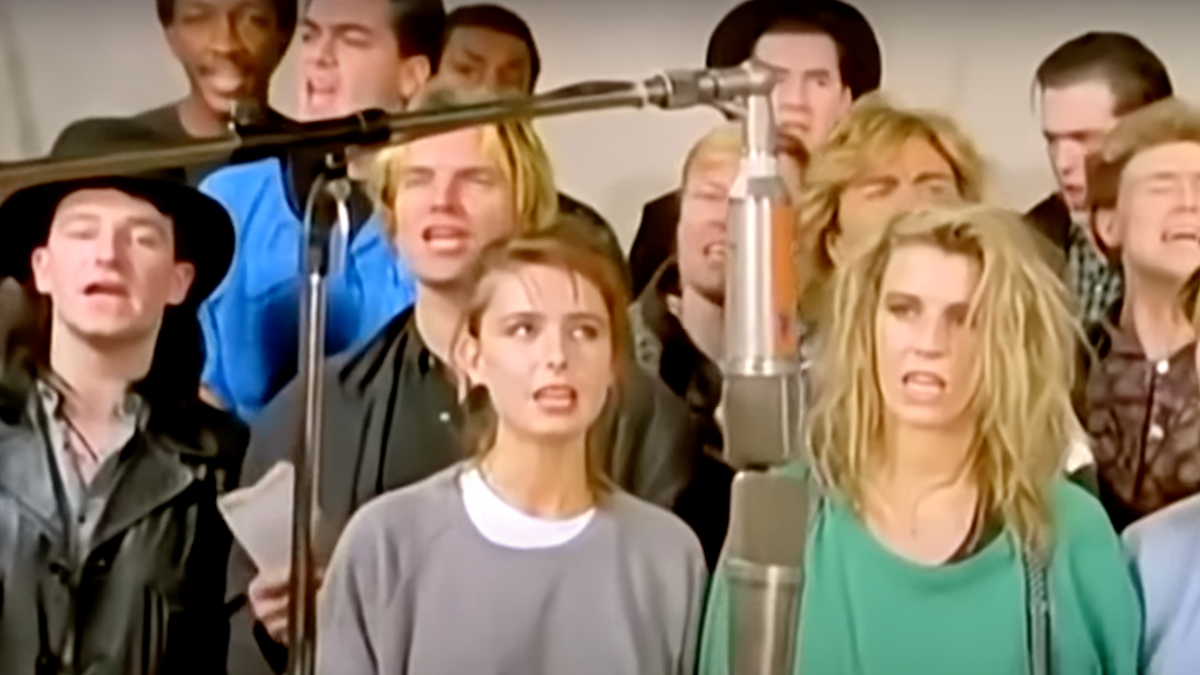
Originally released in 1984, Do They Know It's Christmas? remains the definitive charity single. Its recording was a milestone event in studio history, with much of it being captured for the now famous video. In this classic MusicRadar interview, the engineer on the day, Stuart Bruce, recalls the historic session and how the day unfolded.
39 years ago, Do They Know It’s Christmas? was recorded at Sarm West Studios in London by the biggest supergroup of musicians ever assembled. The song was written and the recording organised by Bob Geldof and Midge Ure in response to BBC news reports by journalist Michael Buerk about the famine in Ethiopia.
Geldof wanted to raise £70,000 of aid for Ethiopia. A year later he'd surpassed £8 million.
The recording of the track was completed in just one day in November 1984, with the song reaching number one in the first week of December, and selling over three million copies by the end of the year. Geldof wanted to raise £70,000 of aid for Ethiopia. A year later he'd surpassed £8 million.
That was just the start, though. Do They Know It’s Christmas? was the first real high-profile, celebrity-led fundraiser, and led to many others (including Live Aid and the US supergroup single We Are The World).
Indeed, many of today's big fundraising events and annual charity gigs owe a debt of gratitude to this original 1984 recording; it was probably the first time celebrity power had been harnessed in such a way, and the very antithesis of the greed so prevalent in the decade from which it came.
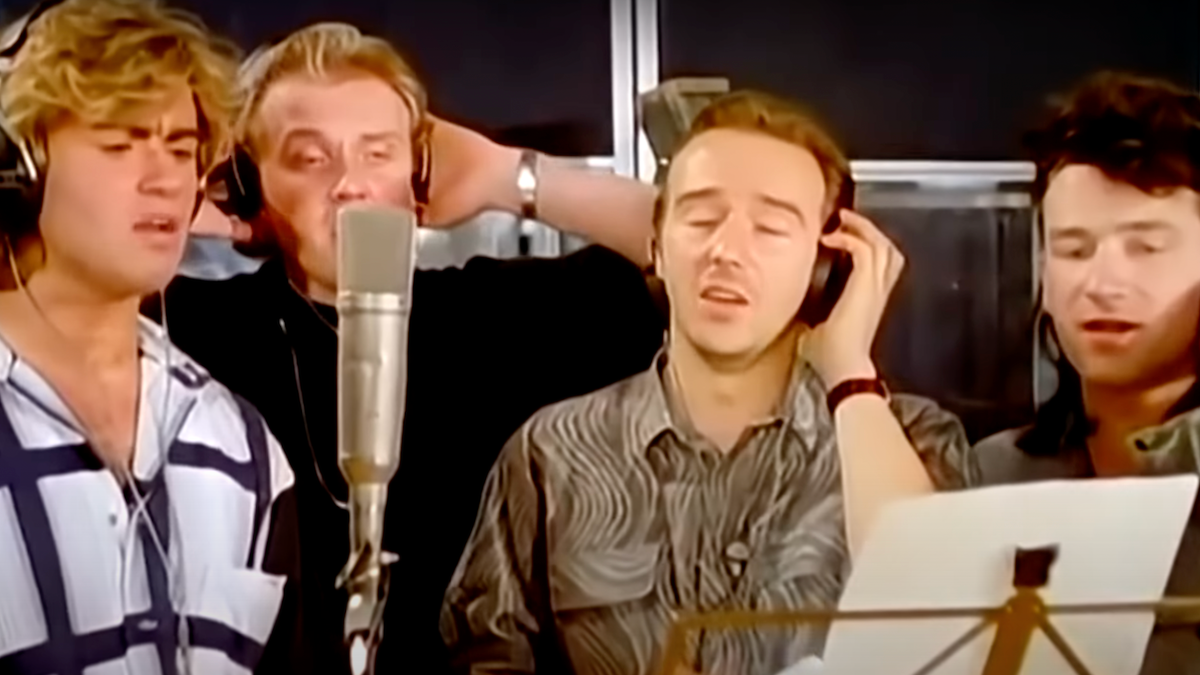
Add in the fact that the song was re-recorded three times in 1989, 2004, and 2014 – hitting number one in the UK each time – and you could easily argue that Do They Know It’s Christmas? was ultimately responsible for raising hundreds of millions for famine relief and other charities.
It was an important day in the studio, then, and one that was enjoyed and endured by 22-year-old Sarm West engineer Stuart Bruce. He has since become a successful producer and songwriter, working with the likes of Kate Bush, Stevie Wonder, Bob Marley, Art Garfunkel, Yes, and Van Morrison. However, back in November 1984, he was very much at the start of his career.
In this 2011 interview with MusicRadar he revealed the intricate process of recording so many vocalists in the studio – some 37 in total, including Bono, Sting, George Michael, and Simon Le Bon – and detailed the rest of the most manic day in recording history.
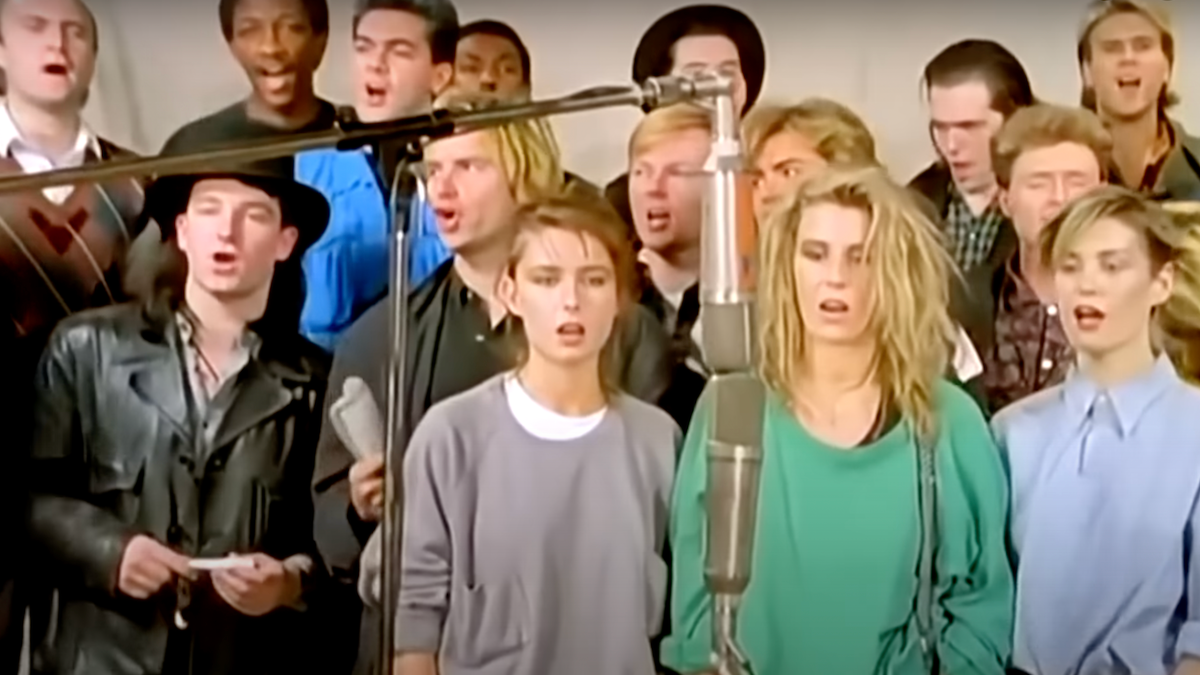
"I worked for Sarm West recording studios at the time as house engineer," Stuart explains, "but being completely honest, I think the [Band Aid] gig was originally offered to another engineer but he refused to work for free.
The gig was originally offered to another engineer but he refused to work for free.
Stuart Bruce
"They asked me and I was more than happy to do it as long as I could get assistants Steve Reece and Heff Moraes to agree as well, because I knew it was going to be an incredibly busy session."
Want all the hottest music and gear news, reviews, deals, features and more, direct to your inbox? Sign up here.
Stuart then reveals that, at first, he didn't really have any idea just how many people would be involved in the Band Aid recording session.
"No I didn't have a clue, and I think if somebody had told me I might have thought about it twice, simply because of the fear factor. I was only 22 and working at Sarm West was my first engineering job.
"I got to the studio at 7am, and we cleared the entire recording room, which is incredible because that room at Sarm was absolutely enormous and yet in the video you can see just how full it is."
Luckily, though, much of the backing track of the song had already been completed, enabling Stuart to focus on the vocal recording. For this he had to prepare for both the lead vocal recordings and the 'Feed the world' chorus where everyone joined in.
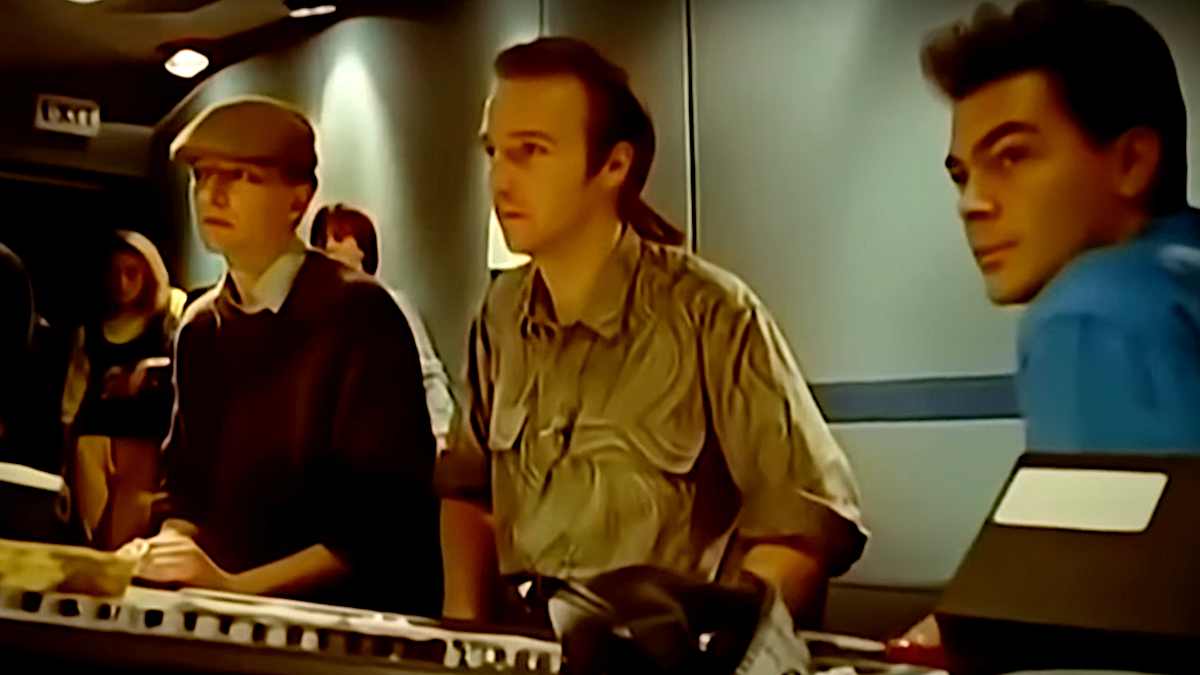
"I set up a Neumann U87 in the middle of the room and another X/Y pair of U87s for recording the choir. Because I knew there were so many film crews coming, I sent a mono signal to all the patch panels in the wall and labelled them so the film crews could just come and grab a feed direct from the console if they needed it."
A few artists started arriving at 9:30am, which was quite incredible considering these were musicians and it was a Sunday.
Stuart Bruce
By this point, Stuart was getting a sense of the number of people who were going to show up for the recording.
"I had worked and spent time with many of them before so I knew it was a bunch of good people," he recalls, "but, there were still loads of artists that I'd never met before.
"Bob and Midge and a few artists started arriving at 9:30am, which was quite incredible considering these were musicians and it was a Sunday! But, the truly amazing thing was that people just kept on arriving: all the artists and seven film crews in total. I knew we had to get so much done, because I had to record all these vocals and mix the record that night. It was a 24-hour gig."
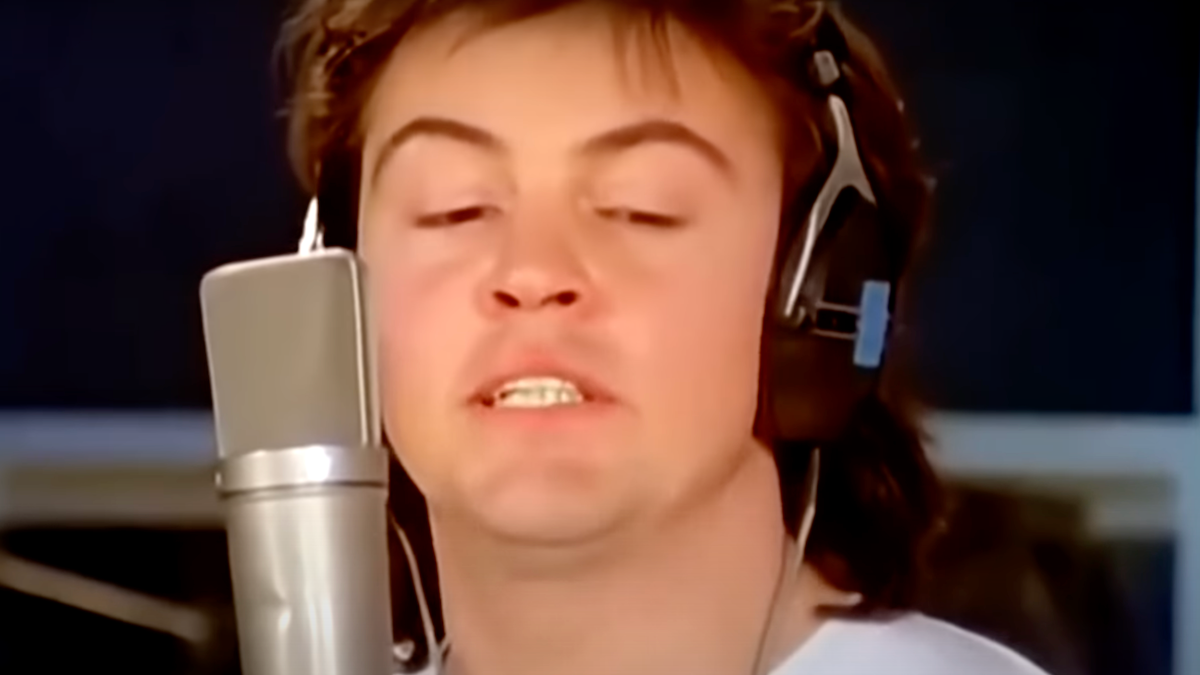
"The first people standing in the control room were Tony Hadley, Paul Young and Simon Le Bon," Stuart says of the start of the recording, "but it got stupidly busy in the control room by lunchtime when you practically couldn't move.
Hats off to the artists because it was such a lot of pressure, recording vocals in front of your peers and the press.
Stuart Bruce
"Everyone just got on with the job. It was just the sheer amount of people that made it stressful. There were cameramen atop creaky stepladders while I'm trying to record a vocal. Hats off to the artists because it was such a lot of pressure, recording vocals in front of your peers and the press. You have to admire them stepping up and getting it done.
"Every time we finished a vocal take, Phil Collins would leap up and shout 'drums!' because he wanted to do his recording. It was funny because at the time Phil was probably one of the most famous singers in the room and was so patient in waiting all day for his turn to do the drums.
"It was such a hectic day and I remember only going to the toilet for the first time at about 11pm," Stuart reveals. "I went downstairs to the loos at Sarm and the door was all kicked in. When I spoke to my assistant about it he casually told me that Spandau Ballet had done it.
Status Quo had seen the Spandau boys all head down to the toilets and followed them down and locked them in and left them there.
Stuart Bruce
"I thought this was really odd, because I knew the Spandau boys and it didn't seem like them. But, as it turned out, Status Quo had seen the Spandau boys all head down to the toilets and followed them down and locked them in and left them there!"
By the middle of the afternoon, most of the vocals were recorded and Stuart and his team moved onto recording Phil's drumming.
"Like most drummers, during the recording he played much louder and distorted the signal, so we had to do it again, but if it wasn't for that he would have nailed it perfectly first time."
There was one final vocal to record and that was Boy George, who had arrived late because he had been on tour in the States.
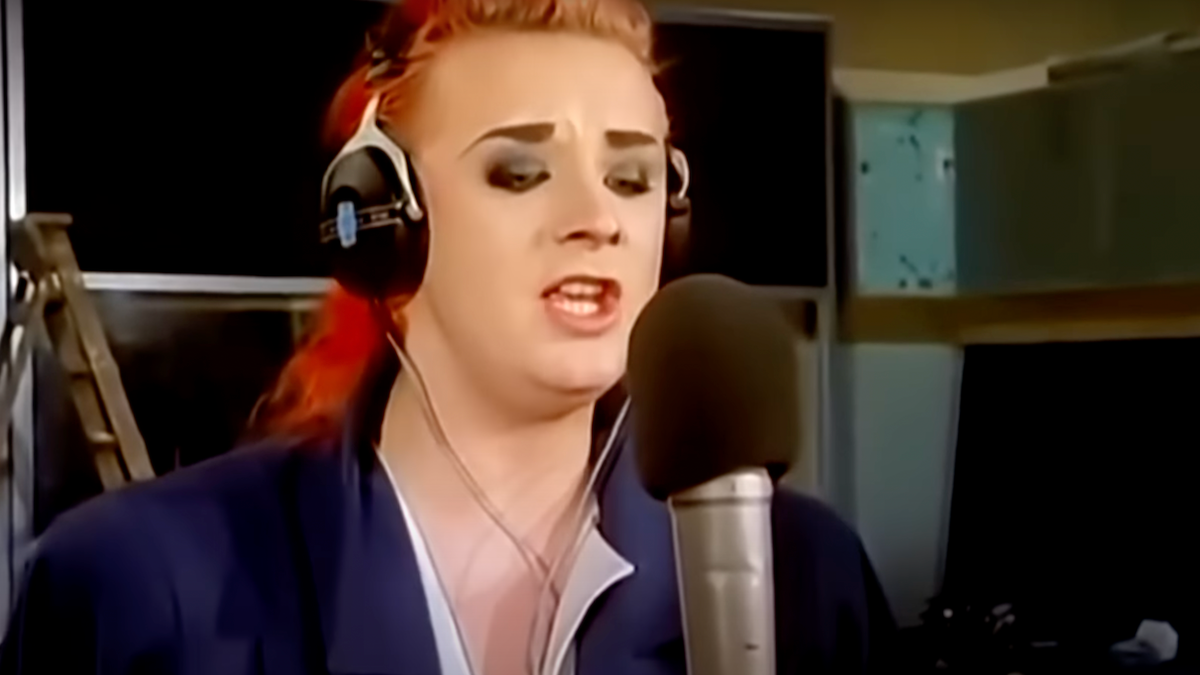
"He was the only artist all day that asked for something," Stuart revealed. "He wanted a bottle of brandy for his throat because it was so shot from the previous night's show in the US. But he put his all into it and after a few takes got exactly the feeling we wanted."
I ended up actually hearing the song on the radio while I was still in the cab on the way to get the record mastered!
Stuart Bruce
"Once Boy George was done, Midge, Bob and I started. We had to be clever with the recording as we had limited channels so singers had to share tracks. Then we'd use a multiplier to send the same channel to four channels of the desk and use the automation on the desk to switch between the voices, thus giving you the ability to have different EQs and settings on each vocal.
"We wound up the mixing by about 8am the next day and ran off a stereo 1/4-inch tape for Bob because he was going straight to Radio One for the first play on the Breakfast Show.
"I ended up actually hearing the song on the radio while I was still in the cab on the way to get the record mastered! I don't know many people who can say they've had that happen."
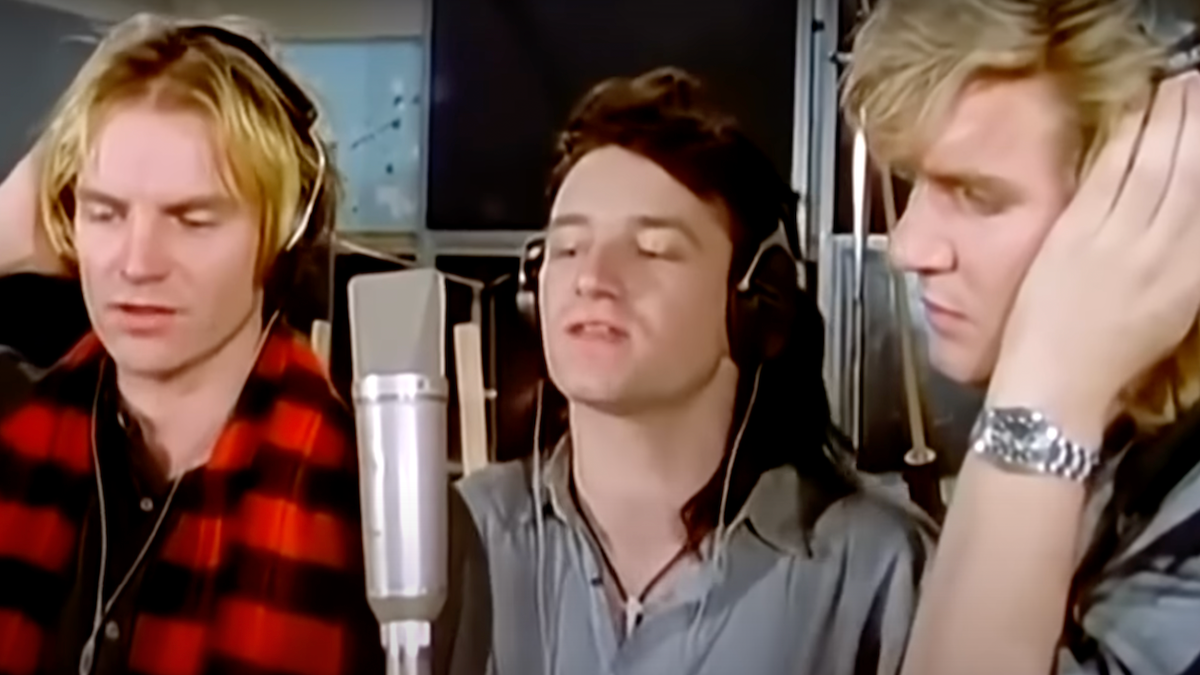
"I was scribbling down notes about the mix while I was hearing it on the radio. But I'd had so much brandy and no sleep that I turned up at the mastering studio telling the mastering engineer Steve Angel that it sounded horrible and he needed to do something. My ears had started shutting down from being up all night!
My ears had started shutting down from being up all night.
Stuart Bruce
"We ended up doing seven EQ and compression changes live throughout the song straight to the cutting lathe because we wanted to keep the quality as high as possible and not make another tape version."
Stuart looks back at the recording session and the impact it made with some pride, but concludes, "It's so long ago and it's not about that. It's about the message that we simply can't let atrocities in this world just happen without us doing something."



Andy has been writing about music production and technology for 30 years having started out on Music Technology magazine back in 1992. He has edited the magazines Future Music, Keyboard Review, MusicTech and Computer Music, which he helped launch back in 1998. He owns way too many synthesizers.
